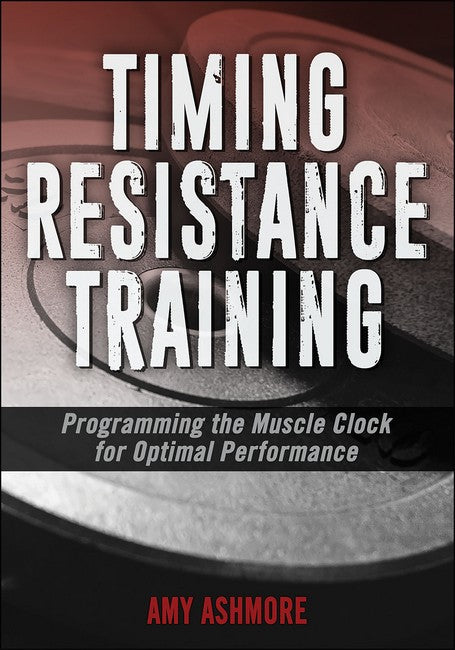Amy Ashmore is a faculty member in the exercise science department at Florida State University. She has over 30 years of sport and fitness industry and academic leadership experience. Ashmore has authored dozens of articles, blogs and continuing education programmes recognised by National Strength & Conditioning Association (NSCA), American College of Sports Medicine (ACSM) and many more.
Request Academic Copy
Please copy the ISBN for submitting review copy form
Description
Part I. Understand the Science of Muscle Clocks Chapter 1. What Is a Muscle Clock? Muscle Clocks: Description and Functions The Master Clock Regulation and Communication Application to Resistance Training Conclusion Chapter 2. Overcoming Chaos, Confusion, and Interference Molecular Competition Interference Theory Cardiovascular Endurance Training Muscular Endurance Muscle Activation Patterns Competing Muscle Adaptations Cardiovascular Training Interferes With Resistance Training Interference Mechanisms Avoiding Interference Resistance-Trained Athletes High-Intensity Interval Training, Sleep, and Athletes Evidence From Aerobic Endurance Athletes Time of Day Programming Summary Conclusion Part II. Learn the Tools for Exercise Programming Chapter 3. Muscle Clocks' Need for Cues and Recovery Environmental Cues Activity-Rest Patterns Physiological Cues Exercise Training and Programming Conclusion Chapter 4. Applying Biomechanical Similarity to Resistance and Plyometric Exercises Biomechanical Similarity Exercise Categories Conclusion Part III. Create Effective Training Programs Chapter 5. Training Muscles to Think and Anticipate Motor Learning Influences Programming Sample Program Programming Summary Statements Age-Related Declines in Anticipation Conclusion Chapter 6. Undertraining to Maximize Performance Training Load Intentional Undertraining New Approach to Muscle IQ Rationales for Undertraining Benefits of Undertraining Differentiated Programming Conclusion Chapter 7. Using Muscle Clocks to Train for Strength Paired Exercise Resistance Training Model Resistance Training Programming Resistance Exercise Pairing Routines Sample Workouts Conclusion Chapter 8. Using Muscle Clocks to Train for Power Complex Training Complex Training Programming Resistance and Plyometric Exercise Pairing Routines Sample Workouts Conclusion Chapter 9. Using Muscle Clocks for Concurrent Training Concurrent Training Competing Mechanisms Using Muscle Clocks to Avoid Interference in Programming Cardiovascular Programming to Improve Resistance Training Outcomes Programming Summary Statements Conclusion Chapter 10. Using Muscle Clocks to Improve Flexibility Flexibility and Muscle Performance Types of Stretching Muscle Pliability Is a Timing Cue Muscle Length Strength and Power Stimulus Recovery Aid Flexibility Programming Programming Summary Statements Conclusion
"Amy Ashmore has authored a cutting-edge book that will not only help coaches and trainers set valuable programs in the gym but will also help athletes and fitness enthusiasts achieve pinnacle successes." -Kevin McGuire, Managing Editor of American Fitness Magazine "I have been privileged to have a professional association with Dr. Ashmore for the past 10 years, during which time she has impressed me with her unique ability to effectively bridge the gap between the scientist and the practitioner." -Cedric X. Bryant, PhD, President and Chief Science Officer of American Council on Exercise "Amy has been writing and presenting for IDEA since 2002. She can get fitness professionals fully engaged in the complexities of biomechanics and physics. She is an intelligent professional, creative teacher, and superb educator." -Sandy Todd Webster, Editor in Chief for IDEA Health & Fitness Association

